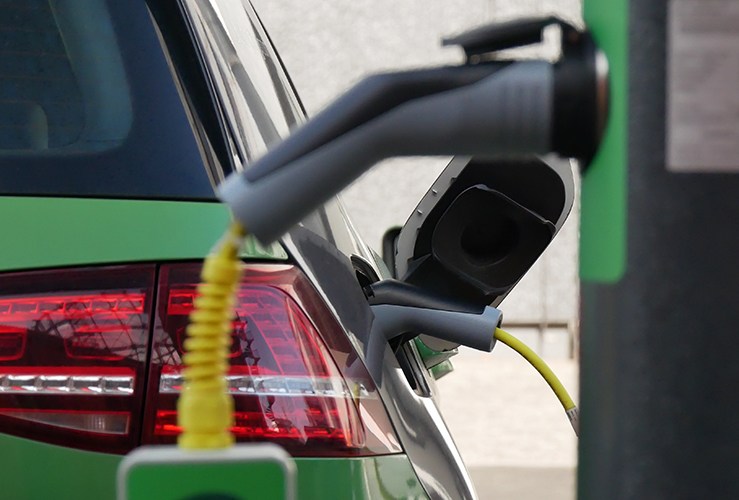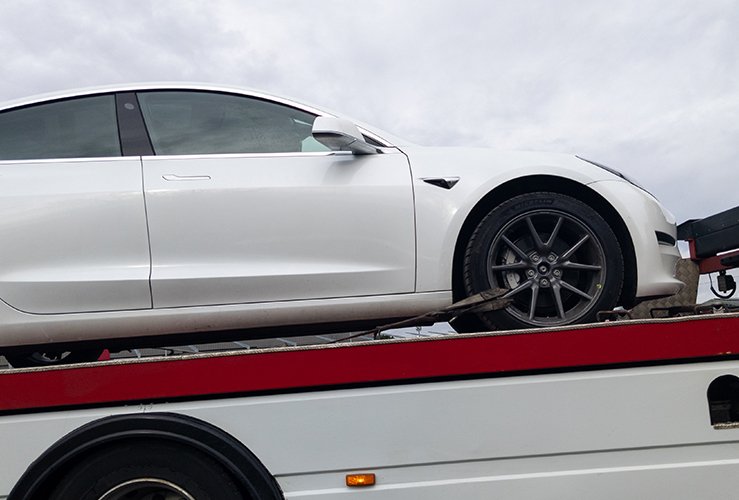The latest electric cars are bristling with innovative tech, but they can't deal with the age-old problem of ‘running out of juice.
If you have driven a petrol or diesel for a reasonable length of time, you'll probably have experienced the sinking feeling that comes with running out of fuel.
And just as with a fuel-based car, you'll find yourself on a highway to nowhere when your electric car battery runs out of charge.
Range anxiety
Concern about running out of charge is a key reason people are put off buying EVs.
But modern electric vehicles offer a much better range than early generations, so it's unlikely you'll ever be stranded by the roadside.
That said, petrol or diesel cars have a much better range than EVs.
For example, the latest petrol-based VW Golf boasts an impressive range of 575 miles, compared to 336 for a Nissan Leaf.
But a fully topped-up Leaf can still get you from London to Newcastle (250 miles) on a single charge, with plenty left to spare.
At the upper end, the Mercedes EQS 450+ offers a range of 453 miles between charges - so it is clear EVs will soon match the range of combustion engine vehicles.
What happens if your EV runs out of charge?
In short, when your EV runs out of charge it will stop running.
But your vehicle will have a series of warning systems that should tell you to top up long before you run out.
Models differ, but generally, you can expect the following sequence of warnings:
- An initial low-charge warning (generally at 10-12 %)
- At 5%, your EV's navigation system will identify the nearest charging station
- You will then be shown (roughly) how far you can go on the current charge
- Once you hit 0%, you'll be on reserve power - which should get you about five miles further
- After this, you're in 'turtle mode' - when your car directs power to essential systems only
- After around half a mile, your vehicle will come to a halt
When zero doesn't mean zero
Manufacturers have designed their batteries to retain a little charge even when the car reads it as zero; this gives owners a little more leeway to find a charge point.
That said, the nature of lithium-ion batteries means it's difficult to determine the exact amount of charge (and therefore range) left in a cell.

Reaching a charge point should be easy
The UK is a small country, and charge points are always springing up. Indeed, there are 150% more charging locations than petrol stations - so getting a top-up should be much easier for an EV owner.
Nationally, there are approximately 21,000 charging locations compared to 8,300 petrol stations.
What to do if your electric car runs out of charge
Electric car run out of charge? As with a petrol or diesel car, if your EV has run out of charge (or is about to), pull over somewhere safe and level, and turn your wheels away from the road.
Apply your parking brake and turn on your hazard lights so other road users can see you.
Note your location then contact help.
If my EV car battery dies, will it recharge?
Yes. EVs can go several months without being recharged.
Roadside assistance when you've run out of charge
The UK's breakdown recovery industry has evolved quickly to meet the needs of EV owners, including when they run out of charge.
Some providers will send a flatbed tow truck to take your vehicle to the nearest charging point.
Others have mobile charging devices that can give you enough charge to reach the nearest charge point.
Can you push an electric car if it breaks down?
Your EV can only be pushed if it has a neutral gear. Beware that with no power, steering will be an effort (just as with a combustion engine car that has run out of fuel and needs to be pushed).
Can you tow an EV?
Generally, no. Most EVs do not have a neutral gear; their wheels are connected to the engine.
This means if you tow an EV it will turn the motor components, which could cause overheating and serious damage.
For this reason, recovery providers send a flatbed truck if an EV needs to be moved.
An exception is the Nissan Leaf, which is front-wheel drive. This means the car can be towed only if the rear wheels are touching the road.
Can you jumpstart an electric car?
Yes, you can jumpstart an EV's 12V battery, but you can’t use another vehicle (petrol or otherwise) to "jump" the EV's main battery.
A dead 12V battery on your EV is something to be avoided.
And once the 12V is charged, it will not be able to deliver any power to the main cell. It is tiny compared to the main cell, so could never provide enough power to drive the wheels.
Most EV's 12V batteries get charged by the main battery when the car is in motion.
Others will only charge the 12V cell if the main battery has a certain amount of charge.
Can an EV/hybrid jumpstart a petrol/diesel?
Technically this is possible, but it carries the risk of damaging the EV's electrical system - so should be avoided.
How to avoid running out of charge
If you're planning a long journey, identify charge points along the route and plan where you'll stop to recharge.
Naturally, you'll want to recharge long before your battery reaches a critically low point.
It's just the same scenario with combustion engine cars: you'll want to top-up in good time.
However, planning top-ups is more important for EV owners because electric cars have a shorter range.
Other factors also affect range. For instance, an EV will go further on a single charge on a warm summer's day than on a cold winter's one.
You'll also get more range if you go a little slower. The Energy Saving Trust estimates that driving at 70mph will reduce range by 36% compared to driving at 50mph.
Averaging 60 mph speed is a good bet.





